The FSP Hydro PTM X Pro 1000W ATX 3.0 PSU Review: Premium Platinum Power
by E. Fylladitakis on March 7, 2023 8:00 AM EST- Posted in
- Cases/Cooling/PSUs
- PSUs
- 1000W
- FSP
- 80Plus Platinum
- ATX v3.0
- 12VHPWR
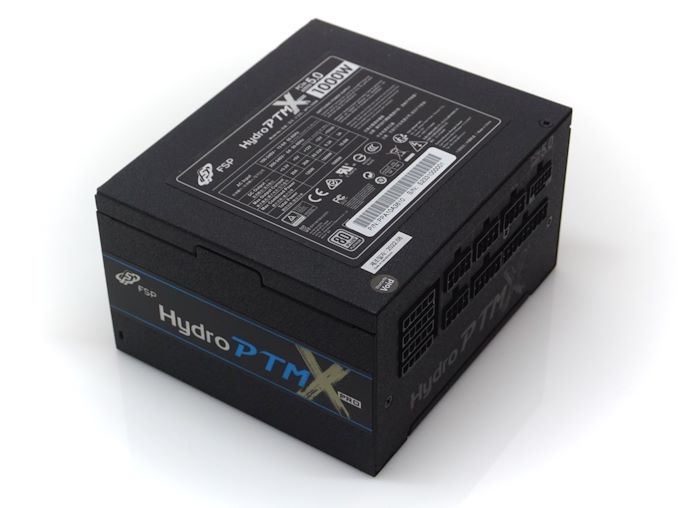
The global power supply market has been witnessing significant growth in recent years, driven by the increasing adoption of high-performance computing systems and the growing demand for energy-efficient products. According to a report by ReportLinker, the global PSU market is expected to reach $46.2 billion by 2027, with a CAGR of 5.9% from 2020 to 2027 (revised to 5.5% post-pandemic). Although the report includes almost every type of PSU (and not just PC PSUs), it also mentions the increasing demand for high-wattage PSUs for gaming and mining applications, which is expected to drive market growth further. Fortron Source Power, commonly known as FSP, was one of the primary sources that facilitated this report.
FSP is a Taiwanese company that has been providing power supply solutions since 1993. The company prides itself on its commitment to quality and innovation and has gained recognition for its reliable and energy-efficient products. FSP's product portfolio includes power supplies for personal computers, servers, industrial and medical equipment, LED lighting, and electric vehicles. FSP's power supply unit (PSU) division is one of its flagship businesses, and the company has been consistently expanding its product lineup to meet the growing demand for high-quality PSUs. Today the company offers a wide range of options to cater to different user needs.
In today’s review, we are taking a look at the Hydro PTM X Pro 1000W, FSP’s latest ATX 3.0-compliant unit. FSP released one of the first ATX 3.0 units in the market, the Hydro G Pro series, which we took a look at a couple of months ago. In comparison to that power supply, the PTM X Pro series is aimed at system builders seeking a higher level of performance, with the primary discernible difference being the 80 Plus Platinum efficiency certification. Of course, the better certification rating implies several design differences, which we will examine in this review.
| FSP Hydro PTM X Pro 1000W ATX 3.0 Power Specifications ( Rated @ 50 °C ) |
|||||
| RAIL | +3.3V | +5V | +12V | +5Vsb | -12V |
| MAX OUTPUT | 20A | 20A | 83.3A | 2.5A | 0.3A |
| 120W | 1000W | 12.5W | 3.6W | ||
| TOTAL | 1000W | ||||
| AC INPUT | 100 - 240 VAC, 50 - 60 Hz | ||||
| Street Price | $279 | ||||
Packaging and Bundle
FSP supplies the Hydro PTM X Pro 1000W in a colorful cardboard box with an additional cardboard ribbon around it. The box is very sturdy and the product is additionally protected inside thick packaging foam slabs. A wealth of information about the unit and its new PCIe 5.0 12WHPWR connector can be found on every side of the box.
Besides the necessary mounting screws and AC power cable, the company also supplies a couple of cable straps and a jump-start adapter for testing the PSU without connecting it to a motherboard. There are also two sets of side stickers, one green, and one red. The blue set is already glued to the unit. These stickers are permanent and cannot be removed without damaging them. FSP clarifies that the stickers do not affect the warranty, thus they can be removed/replaced without any repercussions for the consumers.
The FSP Hydro PTM X Pro 1000W PSU is a fully modular design, allowing for the removal of every DC power cable, including the 24-pin ATX connector. Nearly all of the cables are black, ribbon-like, with black connectors. The only exception lies with the PCIe 5.0 12WHPWR cable, which also is all-black, but it is a classic sleeved cable instead.
As we also saw on the packaging of the Hydro G Pro, the packaging of the Hydro PTM X Pro has printed on the box that the 12WHPWR cable is rated for up to “9.2 A per contact, with all 12 power contacts”. That is misleading wordplay, as many users may assume that all 12 contacts can deliver current to the card. Each of the power contacts of the 16-pin connector is indeed capable of handling 9.2 A, yet there are six voltage and six ground contacts, meaning that the cable has a maximum continuous current delivery capacity of 6 × 9.2 A, which fully conforms with Intel’s design requirements.
| FSP Hydro PTM X Pro | ||
| Connector type | Hardwired | Modular |
| ATX 24 Pin | - | 1 |
| EPS 4+4 Pin | - | 2 |
| EPS 8 Pin | - | - |
| PCI-E 5.0 | - | 1 |
| PCI-E 8 Pin | - | 6 |
| SATA | - | 12 |
| Molex | - | 3 |
| Floppy | - | 1 |
The FSP Hydro PTM X Pro 1000W PSU
External Appearance
Despite the high power output and 80Plus Platinum efficiency, FSP managed to maintain ATX-compliant proportions for the Hydro PTM X Pro 1000W. Actually, the company took it a step further than sticking to ATX-compliant size and reduced the length of the unit down to 130 mm, 10 mm shorter than the ATX-dictated length of 140 mm. This matters little to most users as the PSU still requires an ATX case to fit and would fit even if it was 10 mm longer – however, it could be important for those who explore custom builds and unique projects.
FSP sprayed the chassis with a textured paint that is both visually appealing and resistant to fingerprints. The fan finger guard is a separate but custom part, with the company logo decorating its center. The sticker with the unit’s electrical certifications and specifications covers most of the unit’s top side.
Decorative blue-themed stickers are pre-applied on the sides of the unit, which can be replaced with the red or green stickers that FSP includes in the package. The downside here is that the stickers will be destroyed once removed, making any choice technically permanent. There is also no embossed area or guide for the stickers, requiring a lot of attention and finesse when installing them to ensure they are level and symmetric.
A typical on/off switch can be seen at the rear side of the unit, beside the power connector. Another small switch right next to it controls the “ECO Mode” of the cooling fan. When activated, the cooling fan will shut off while the load is under 300 Watt. The front side of the unit is home to the numerous connectors for the modular cables. A subtle legend is printed under each group of connectors, sprayed directly onto the chassis, with the series logo covering the rest of the surface.
Internal Design
Due to the reduced size of the chassis, FSP’s engineers were limited to a 120 mm fan for the cooling needs of the Hydro PTM X Pro 1000W PSU. The fan is supplied by Protechnic Electric, FSP’s usual supplier of cooling fans. It is the MGA12012XF-O25, an 120 mm fan with a fluid-dynamic bearing (FDB) engine and an extremely high maximum rotational speed of 2700 RPM.
While most units nowadays on the market have a hidden ODM behind them, FSP is the sole company behind the creation of the Hydro PTM X Pro PSU from paper to product. A quick glance at the platform reveals that it is not just an upgraded version of the Hydro G Pro, but is in fact a significantly different design. Aside from the connector of the cooling fan, where someone went a bit overboard with the glue, the layout is extremely well organized.
The filtering stage begins on the rear of the AC receptacle and is textbook, with a total of four Y capacitors, two X capacitors, and two filtering inductors leading to a dual input rectifying bridge configuration. Both of the rectifying bridges share a sizable heatsink that is sandwiched in between them. The passive APFC components are two large 450V/470μF APFC capacitors by Nippon Chemi-Con and a sizable filtering coil. The active APFC components are on a long heatsink right across the edge of the PCB.
Unlike typical configurations that achieve the 80Plus Platinum certification level, the Hydro PTM X Pro has only two transistors that form a half-bridge inversion topology at the primary side of the transformer. The typical configuration here would be a full-bridge to give the unit that little bit of extra efficiency needed to reach a Platinum certification level, but FSP’s engineers managed to reach that efficiency threshold without it.
The secondary side is essentially placed on vertical PCBs. The smaller board is home to the LLC resonant circuitry and the larger board holds the majority of the secondary rectification stage, including the transformer itself. FSP’s engineers implemented synchronous rectification with very high-efficiency switchers (Toshiba TPHR8504PL), which is primarily how this unit reached so high-efficiency figures.
The 3.3V and 5V lines are being generated via the DC-to-DC conversion circuits, which is the norm for all high-efficiency designs. All of the secondary capacitors, electrolytic and polymer alike, are provided by Nippon Chemi-Con. A large number of additional filtering capacitors have been placed on the PCB holding the cable connectors.


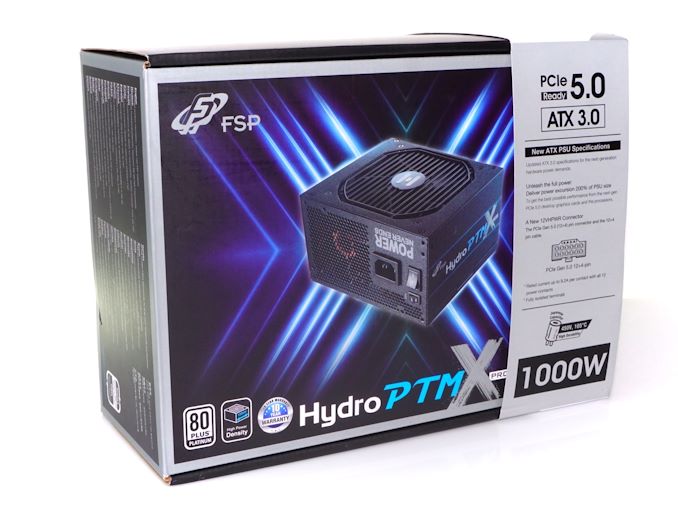
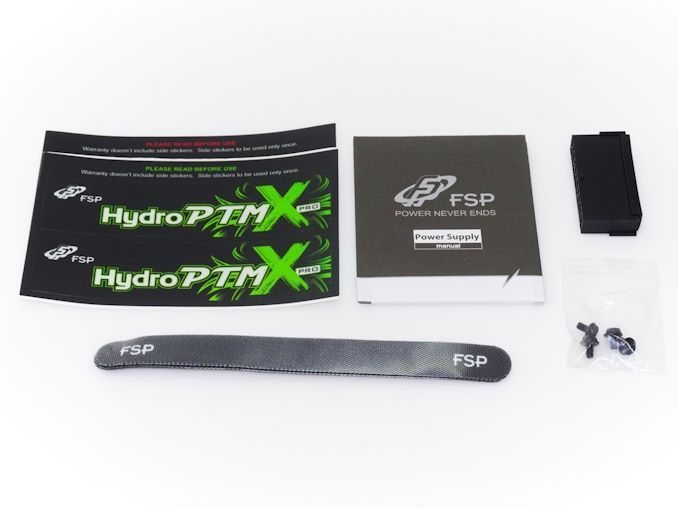
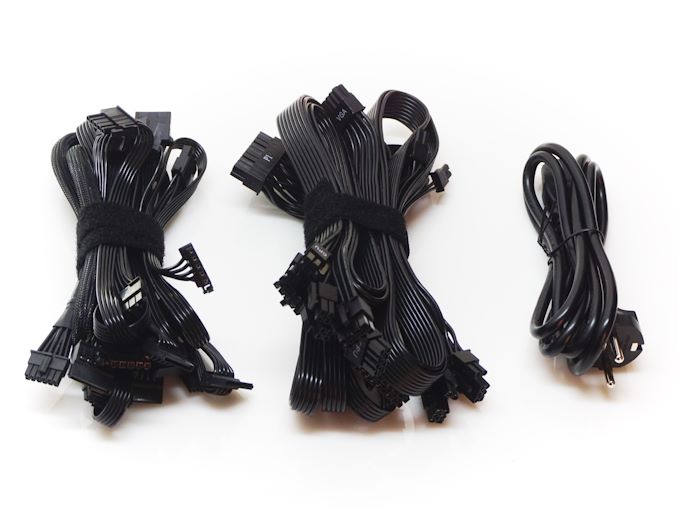

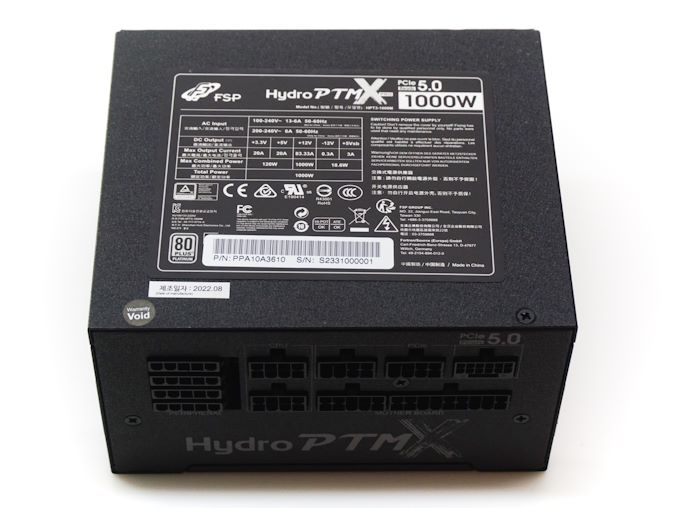

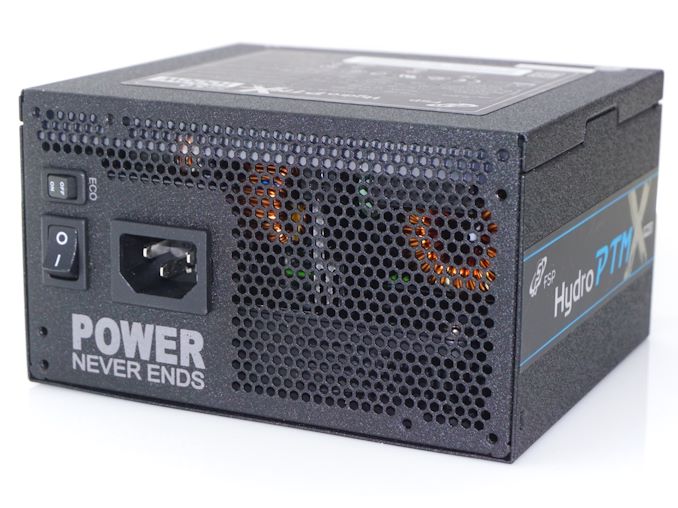
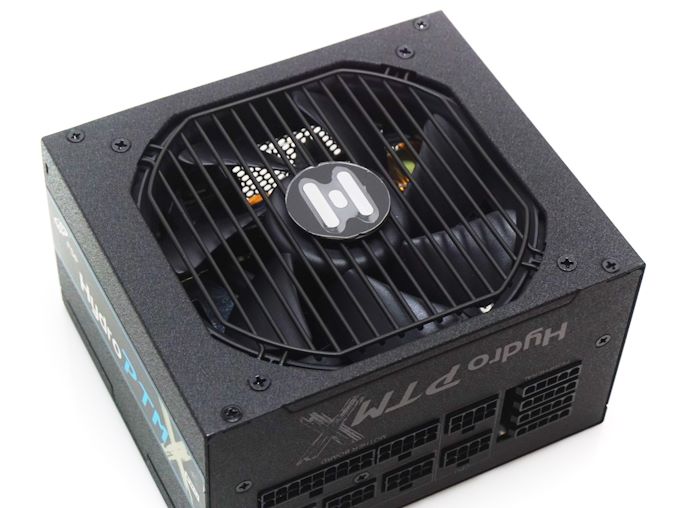
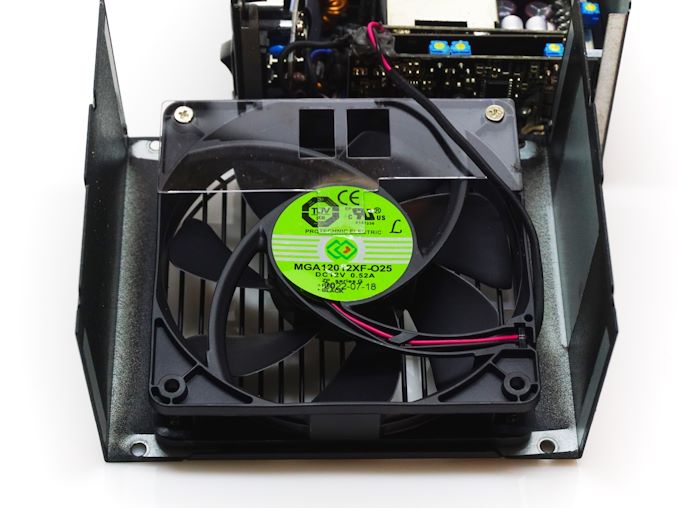


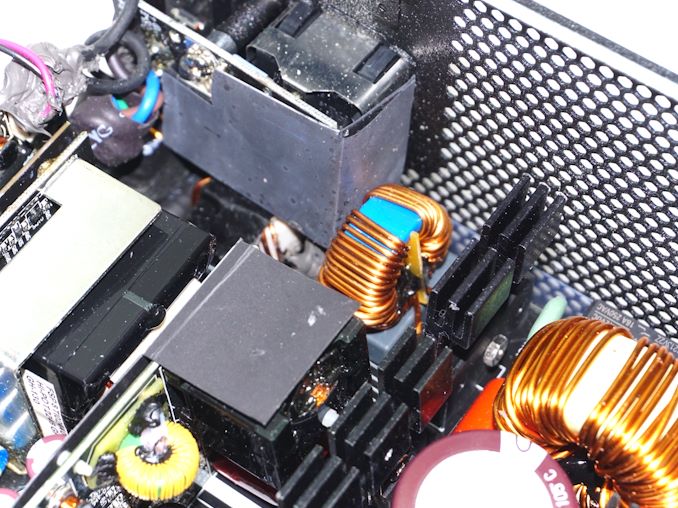
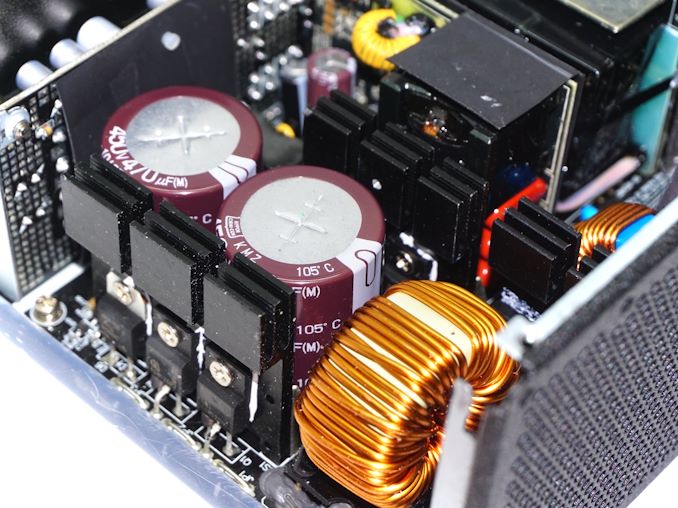
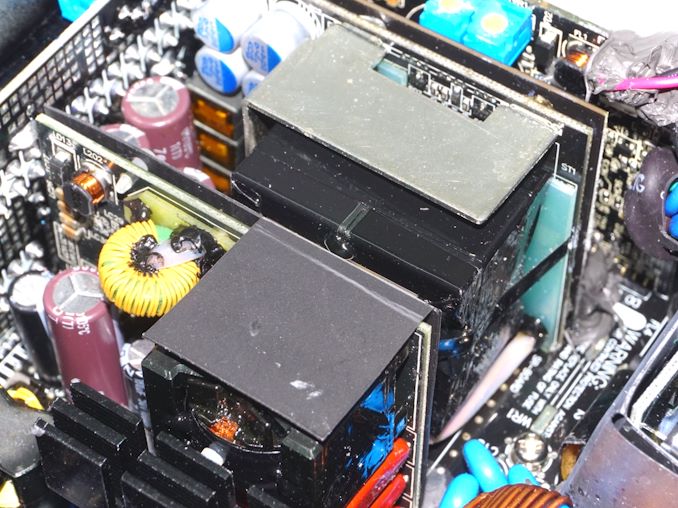








2 Comments
View All Comments
achinhorn - Wednesday, March 8, 2023 - link
Hey -- great article thanks. Curious why you guys don't make direct comparisons to other contending PSU's? A simple table comparing basics like cost, wattage, rating, ATX conforming, with maybe one extra column for standout differences/product novelties would be so clutch. To take it further -- why not product comparison charts in each category you test in?My main purpose for visiting this site is to be able to make informed buying decisions; currently in order to do that effectively for PSU's using Anandtech as my resource, I'd need to read every single PSU article of the past ~year, compare the individual graphs from each category for each product across articles, and compile product data. That's a tall order. For other Anantech articles covering other PC components, I can just read the latest article and see where that product lands.
Techie2 - Wednesday, March 8, 2023 - link
I'm sure the various colored stickers will be a big selling point for the intended audience. Hopefully Mommy and Daddy won't be too upset with the price. It's about 1/5th the price of a good GPU card for gamers.The high-end components are some what wasted by not using the std. ATX case size or slightly larger and a 135mm fan. Customers could have performance, efficiency and acoustics all in one PSU package.